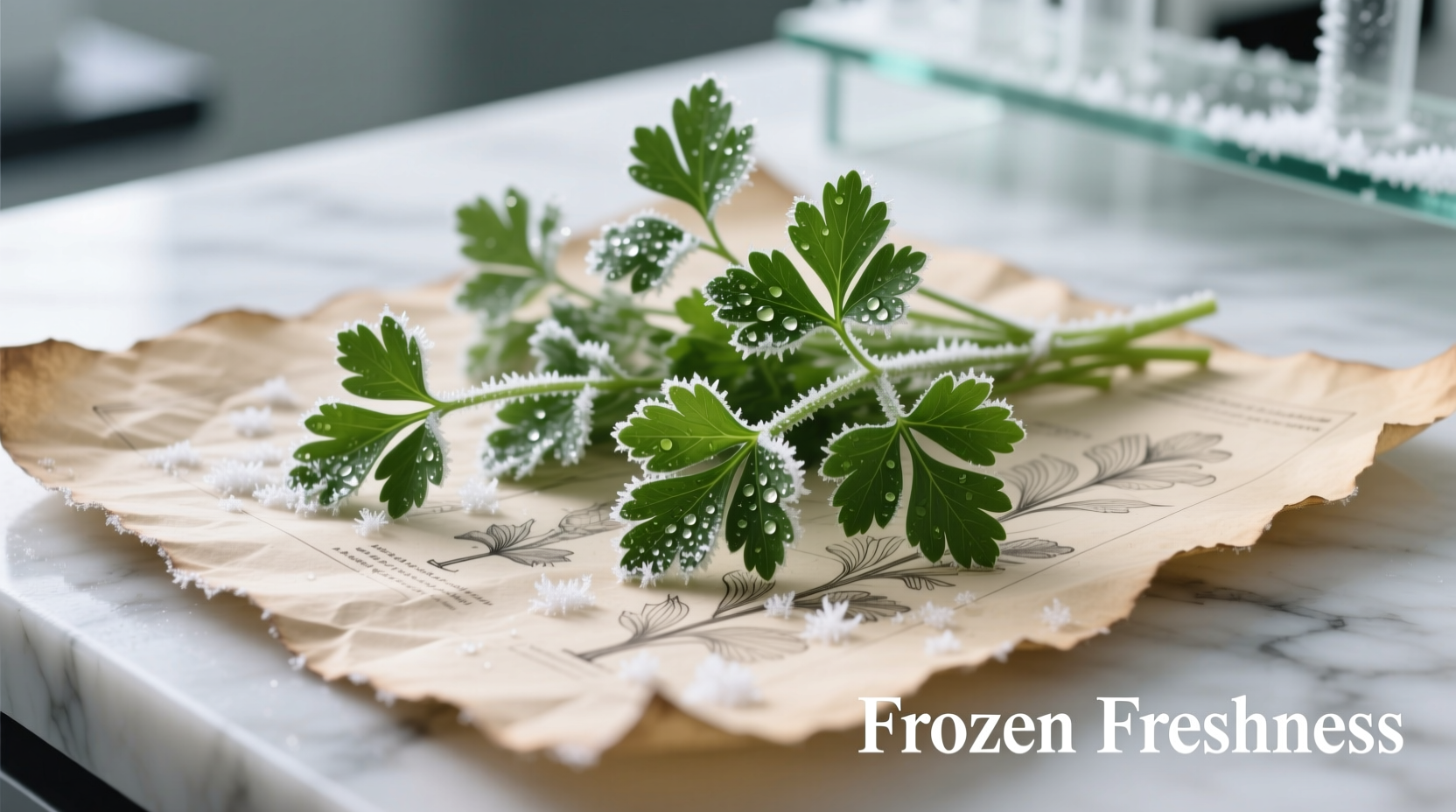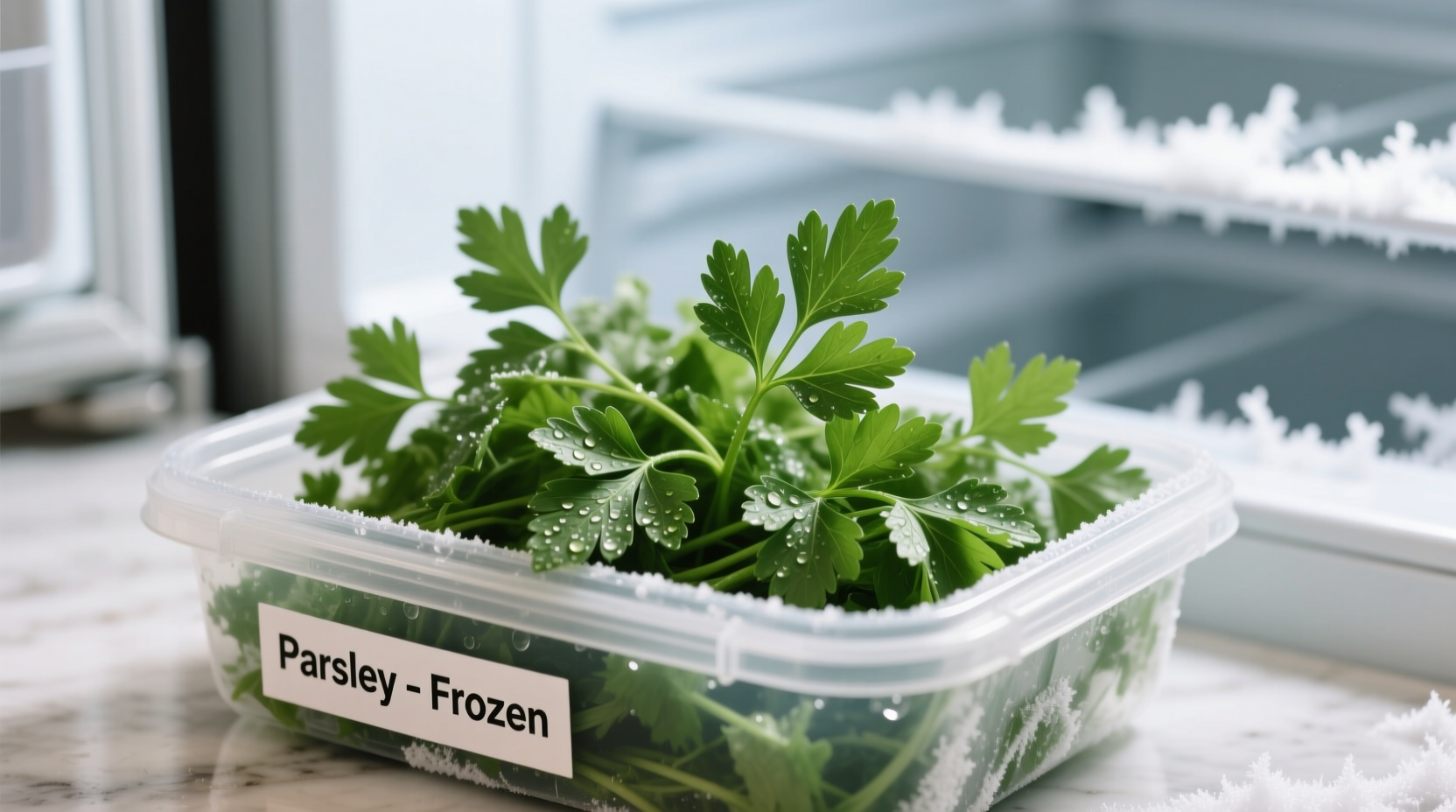Wasting fresh parsley is a common kitchen frustration. As a professional chef who's preserved herbs for Michelin-starred kitchens and home cooks alike, I've perfected freezing methods that maintain parsley's vibrant flavor far better than most realize. This guide reveals exactly how to freeze parsley to maximize shelf life while preserving that fresh-from-the-garden taste in your cooking.
The Freezing Advantage: Why Parsley Thrives in Cold Storage
Unlike delicate herbs like basil, parsley withstands freezing remarkably well due to its sturdy cell structure and high water content. When frozen properly, it retains significantly more flavor compounds than air-dried alternatives. Research from the USDA's Agricultural Research Service confirms that frozen herbs maintain 85% of their original volatile oils compared to just 40-60% in dried versions.
| Preservation Method | Flavor Retention | Shelf Life | Best For |
|---|---|---|---|
| Freezing (proper) | 80-90% | 6 months | Cooking applications |
| Drying | 40-60% | 1-2 years | Spice blends, rubs |
| Refrigeration | 100% (initially) | 1-2 weeks | Raw applications |
Step-by-Step Freezing Process: Two Professional Methods
Method 1: Flash-Freezing Whole Sprigs
Ideal for maintaining parsley's structure when you need whole sprigs for garnishing or bouquet garni:
- Wash thoroughly in cold water, removing any yellowed leaves
- Spin dry in salad spinner or pat completely dry with clean towels
- Spread sprigs in single layer on parchment-lined baking sheet
- Freeze for 2 hours until solid (prevents clumping)
- Transfer to airtight freezer bags, removing all air
Method 2: Oil-Infused Cubes (My Preferred Technique)
This chef-recommended approach preserves flavor exceptionally well for cooking:
- Finely chop parsley, removing tough stems
- Combine with equal parts olive oil (1 cup parsley + 1 cup oil)
- Pour mixture into ice cube trays, filling 3/4 full
- Freeze solid (4-6 hours), then transfer cubes to labeled freezer bags

Storage Timeline and Quality Maintenance
Follow this timeline to maximize your frozen parsley's shelf life:
- 0-2 weeks: Peak quality - virtually indistinguishable from fresh in cooked dishes
- 1-3 months: Excellent quality - ideal for soups, stews, and sauces
- 4-6 months: Good quality - best for strongly flavored dishes where subtle herb notes matter less
- 6+ months: Noticeable flavor degradation - use only in robust dishes
According to the National Center for Home Food Preservation, maintaining a consistent freezer temperature below 0°F (-18°C) prevents ice crystal formation that damages cell structure. Their research shows temperature fluctuations above 10°F cause 30% faster flavor degradation.
When Freezing Isn't Ideal: Context Boundaries
While freezing works exceptionally well for most cooking applications, understand these limitations:
- Raw applications: Frozen-thawed parsley won't maintain crisp texture for salads or garnishes
- Delicate dishes: Subtle flavors in dishes like fish en papillote may be overwhelmed
- Immediate use: When fresh is available, it's superior for finishing dishes
Creative Uses for Frozen Parsley
Maximize your preserved parsley with these professional applications:
- Add frozen cubes directly to soups and stews during last 5 minutes of cooking
- Blend frozen sprigs into pesto without thawing for brighter color
- Use oil-infused cubes to finish roasted vegetables or proteins
- Create instant herb butter by combining thawed cubes with softened butter
Troubleshooting Common Issues
Address these frequent freezing challenges:
- Ice crystals: Result from improper drying - always ensure complete dryness before freezing
- Flavor loss: Caused by air exposure - use vacuum sealing for longest preservation
- Mushy texture: Expected when thawed - use frozen directly in cooking without thawing











 浙公网安备
33010002000092号
浙公网安备
33010002000092号 浙B2-20120091-4
浙B2-20120091-4